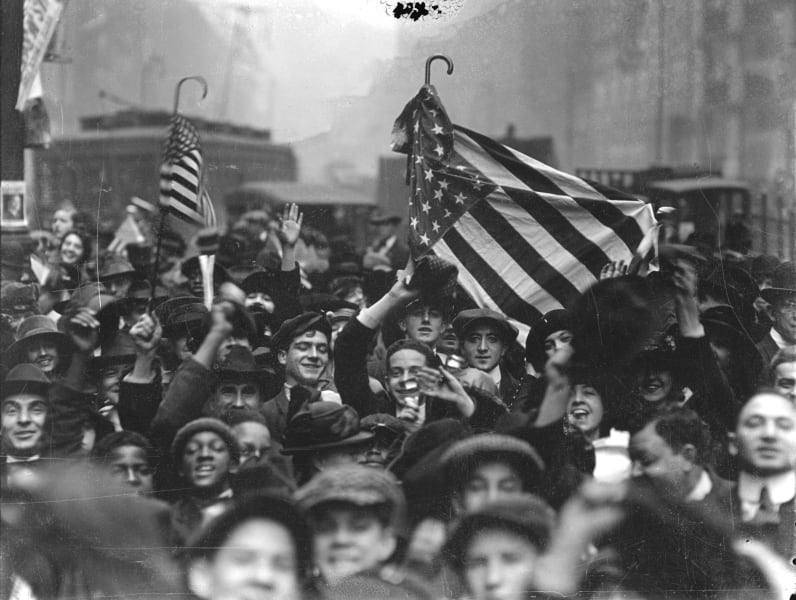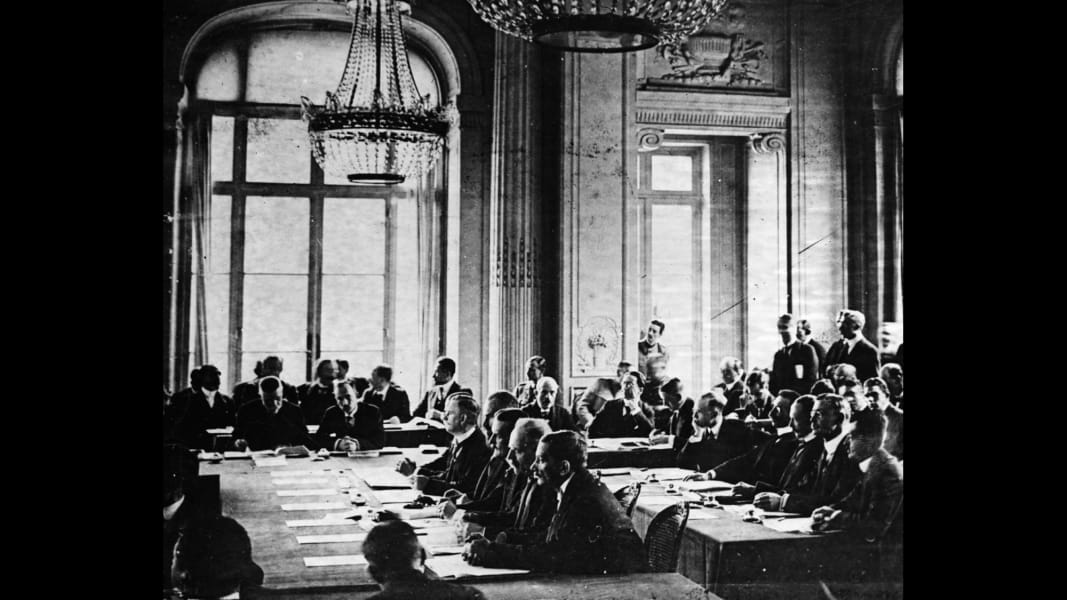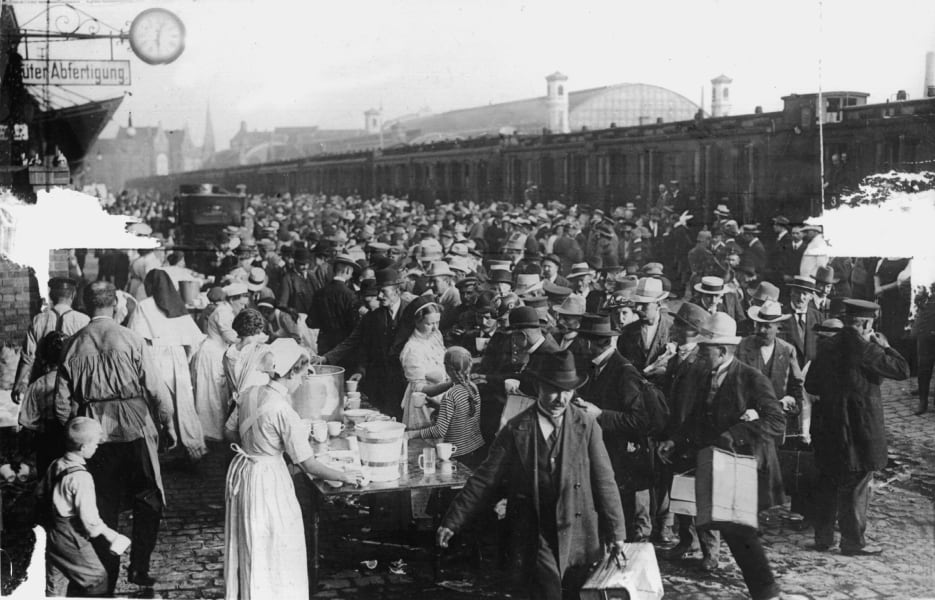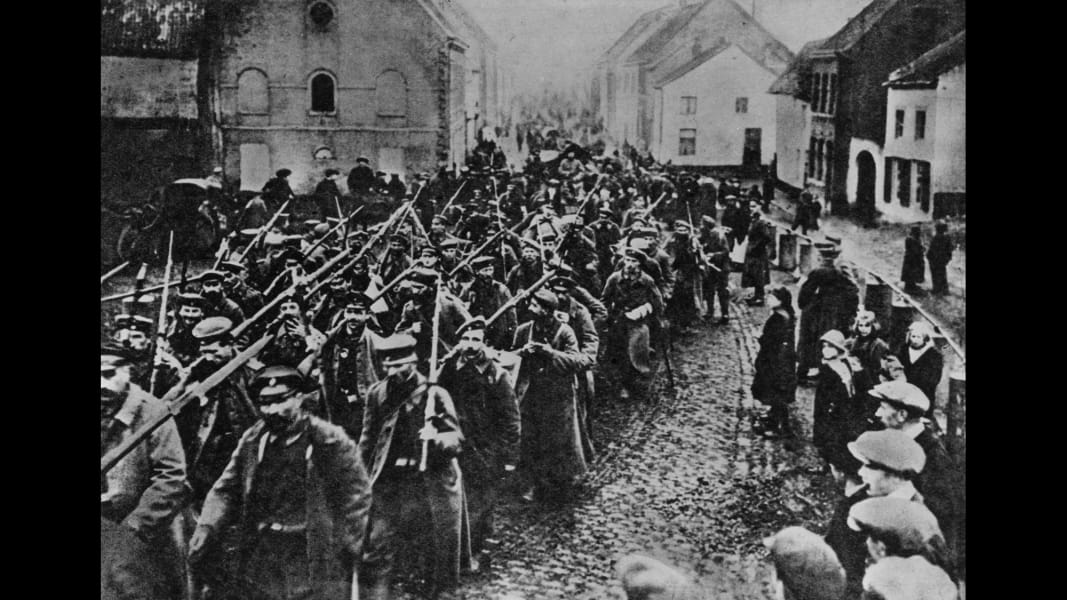Share
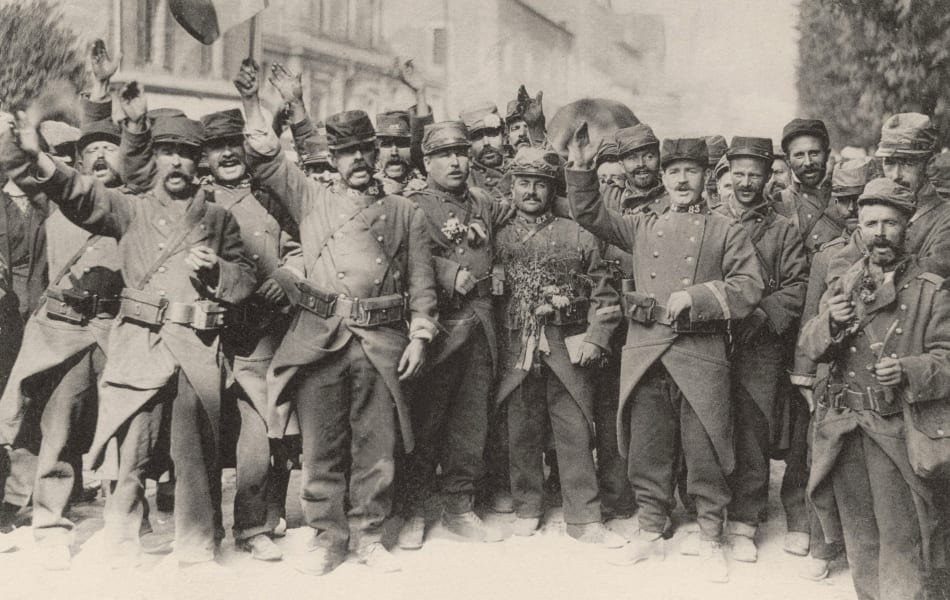

1 of 25
French soldiers sing the national anthem at the beginning of World War I in August 1914. This "war to end all wars" might seem like ancient history, but it changed the world forever. It transformed the way war was fought, upended cultures and home life and stimulated innovations that affect us today. With more than 30 combatant nations and nearly 70 million men mobilized, World War I profoundly destabilized the international order. Look back at some of the war's key events. Corbis
The bodies of Austria-Hungary Archduke Franz Ferdinand and his wife, Sophie, Duchess of Hohenberg, are seen after their assassination by Serbian nationalist Gavrilo Princip on June 28, 1914. The assassination led Austria-Hungary to declare war on Serbia, starting a chain of events that would gradually bring other nations into the fray. Hulton-Deutsch Collection/Corbis
Germans in Berlin mobilize for war on August 1, 1914. Germany was a strong ally of Austria-Hungary. DPA/picture-alliance/AP
French soldiers are seen at a front-line trench in Italy. During World War I, the Allied Powers consisted of Belgium, France, Great Britain, Greece, Italy, Montenegro, Portugal, Romania, Russia, Serbia and the United States. The Central Powers consisted of Austria-Hungary, Bulgaria, Germany, and Ottoman Empire (now Turkey). Roger Viollet/Getty Images
German soldiers captured by the British are seen in France. Underwood & Underwood/Corbis
Men visit the graves of French soldiers killed in the Battle of the Marne in September 1914. Roger Viollet/Getty Images
Troops land at Anzac Cove in the Dardanelles during the battle between Allied forces and Turkish forces at the Gallipoli Peninsula in February 1915. The two sides were fighting for access to the strategic Sea of Marmara and eventually to Constantinople (Istanbul). Corbis
German and British troops are seen together during the Christmas Truce of 1914. Popperfoto/Getty Images
These French Zouave infantrymen were killed by gas during the Second Battle of Ypres, Belgium, in April 1915. The Print Collector/Getty Images
Germans give oxygen to a gas victim in 1915. The cloth masks worn by these soldiers provided little defense; more substantial gas masks were not produced until 1916. By the end of the war, even horses and dogs used at the front had their own gas masks. DPA/AP
German U-boats, or submarines, patrol the Mediterranean coast. Getty Image
French troops rest in Verdun, France, in 1916. Verdun was the site of the longest battle of World War I. Print Collector/Getty Images
Dead bodies lie piled in a trench at Verdun on April 9, 1916. Print Collector/Getty Images
British troops advance during the Battle of the Somme in 1916. PA/AP
A British tank is stranded while crossing a trench during the Battle of the Somme on September 25, 1918. Lt. E Brooks/IWM/Getty Images
German soldiers stand near a crashed fighter plane in Germany in 1916. DPA/AP
Czar Nicholas II of Russia, right, reviews the palace guard just prior to the Russian Revolution of 1917. AP
U.S. President Woodrow Wilson addresses a joint session of Congress in April 1917, requesting a declaration of war on Germany. The United States declared war against Germany after the interception and publication of the Zimmermann Telegram and the sinking of three U.S. merchant ships by German U-boats. AP
Britons stand in line outside an Army recruiting station. Hulton-Deutsch Collection/Corbis
A British sergeant major instructs American soldiers in bayonet fighting at Texas' Camp Dick. Corbis
U.S. Army troops stand in a defensive trench in France. By war's end, thousands of miles of trenches crisscrossed European battlefields. AP
A defeated German army marches home on October 1, 1918. Three Lions/Getty Images
Armistice Day is celebrated in Chicago on November 1, 1918. Chicago History Museum/Getty Images
U.S. troops returning home from France are seen on the USS Agamemnon in Hoboken, New Jersey, in 1919. Getty Images
German delegates listen to French Prime Minister Georges Clemenceau's speech during the signing of the Treaty of Versailles in France on June 28, 1919. Hulton Archive/Getty Images
